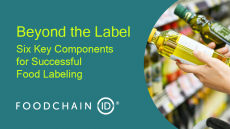Poultry workers may spread antibiotic-resistant E. coli
those who do not work in the sector, say researchers in the US.
While drug-resistant bacteria such as E. coli are common in the industrial broiler chicken environment, a new study is the first in the US to show exposure occurring at a high level among industrial poultry workers.
Researchers at the Johns Hopkins Bloomberg School of Public Health found that workers were 32 times more likely to carry E. coli bacteria resistant to the commonly used antibiotic gentamicin than those working in other areas.
The results, published in the December 2007 edition of Environmental Health Perspectives, suggest that food processing could play a greater role than previously thought in the spread of antibiotic-resistant bacteria.
"One of the major implications of this study is to underscore the importance of the non-hospital environment in the origin of drug resistant infections," said Ellen K. Silbergeld, PhD, senior author of the study.
Similar results have already been shown in Europe, say the US researchers, although human exposure to antimicrobial-resistant bacteria through food has been examined much more extensively than occupational and environmental routes.
The new study was conducted with poultry workers and community residents in the eastern shore regions of Maryland and Virginia, among the top broiler chicken producing regions in the US.
They produce more than 600 million chickens annually.
In the study, researchers conducted in-depth analyses of 49 study participants, 16 working within the poultry industry and 33 community residents.
Stool samples from the participants were tested for resistance to the antimicrobials ampicillin, ciprofloxacin, ceftriazone, gentamicin and tetracycline.
Findings showed that poultry workers had 32 times greater odds of being colonized with gentamicin-resistant E. coli than other members of the community.
"Occupational exposure to antimicrobial-resistant E. coli from live-animal contact in the broiler chicken industry may be an important route of entry for antimicrobial-resistant E. coli into the community," conclude the authors of the study in the journal.
In an interview with Newsday.com, the study's lead author, Lance B. Price, noted that "many of these workers wear uniforms," and these could be handled by other household members during laundry who would then be exposed to the bacteria.
The findings will lend weight to those who are critical of antibiotic use in the poultry sector.
Antibiotic resistant has become a serious problem for public health services around the world.
Price, who serves on the research faculty at the Johns Hopkins School of Medicine, Division of Infectious Disease, said some estimates indicate that well over half of the antimicrobial drugs produced in the United States are used in food animal production.
Currently 16 different antimicrobial drugs are approved for use in US poultry production with gentamicin reported to be the most widely used.














